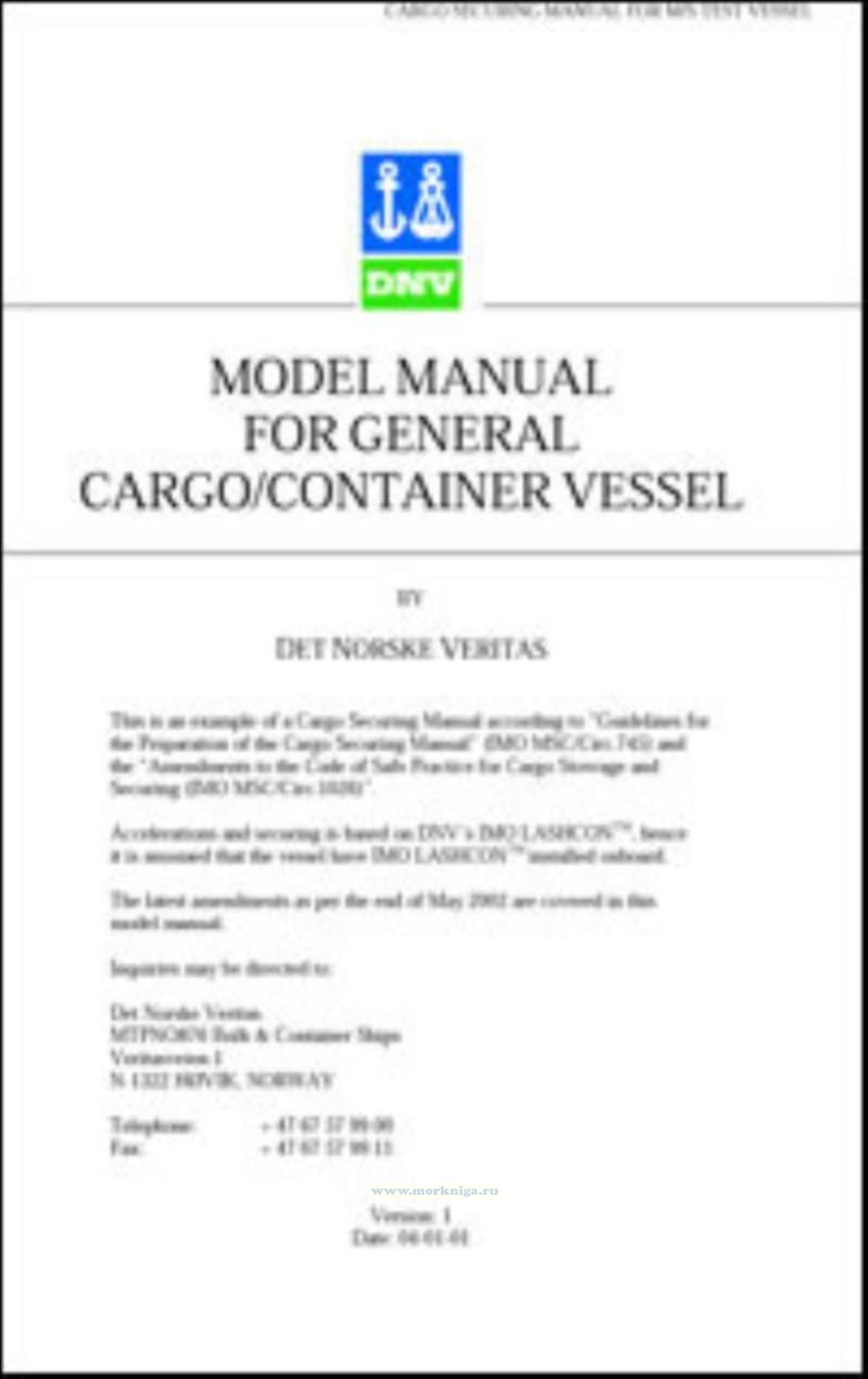Сб с 10 до 16
Cargo Securing Model Manual. For General Cargo/Container Vessel
1 The guidance given herein should by no means rule out the principles of good seamanship, neither can they replace experience in stowage and securing practice.
2 The information and requirements set forth in this Manual are consistent with the requirements of the vessel's trim and stability booklet, International Load Line Certificate (1966), the hull strength loading manual (if provided) and with the requirements of the International Maritime Dangerous Goods (IMDG) Code (if applicable).
3 This Cargo Securing Manual specifies arrangements and cargo securing devices provided on board the ship for the correct application to and the securing of cargo units, containers, vehicles and other entities, based on transverse, longitudinal and vertical forces which may arise during adverse weather and sea conditions.
4 It is imperative to the safety of the ship and the protection of the cargo and personnel that the securing of the cargo is carried out properly and that only appropriate securing points or fittings should be used for cargo securing.
5 The cargo securing devices mentioned in this manual should be applied so as to be suitable and adapted to the quantity, type of packaging, and physical properties of the cargo to be carried. When new or alternative types of cargo securing devices are introduced, the Cargo Securing Manual should be revised accordingly. Alternative cargo securing devices introduced should not have less strength than the equipment which it replaces.
6 There should be a sufficient quantity of reserve cargo securing devices on board the ship.
Contents
1 Contents
2 General
2.1 Ship Data
2.2 Definitions
2.3 General Information
2.4 Principal sources of danger
3 Securing Devices and Arrangements
3.1 Specification of Fixed Cargo Securing Devices
3.2 Specification of Portable Cargo Securing Devices
3.3 Inspection and Maintenance Schemes
4 Stowage and Securing of cargo
4.1 Handling and safety instructions
4.1.1 General principles of cargo securing
4.1.2 Safe handling of cargo securing devices
4.1.3 Evaluation of forces acting on cargo units
4.1.4 Forces acting on typical cargo units
4.1.5 Calculation of forces in semi- and non-standardised lashing arrangements
4.1.5.1 MSLs for different securing devices
4.1.5.2 Safety factor
4.1.5.3 Simplified method - Rule of thumb
4.1.5.4 Ship Specific Example based on Alternative Method - using IMO LASCHON™
4.1.5.5 Ship Specific Accelerations from IMO LASCHONTM
4.2 Application of portable securing devices
5 Supplementary Requirements for General Cargo/Container vessel
5.1 Bulk Carriers
5.1.1 Extracts from various Timber Deck Codes
5.2 Container Carriers
5.2.1 Handling and Safety Instructions
5.2.2 Stowage and Securing Instructions
5.2.2.1 Stowage and Securing Plan (not included in this model manual)
Appendix I - Log for maintenance of cargo securing equipment
Appendix II - Manual procedure for calculation of lashings
Appendix III - Applicable Annexes from the CSS Code
ANNEX 6 Safe stowage and securing of coiled sheet steel
ANNEX 7 Safe stowage and securing of heavy metal products
ANNEX 8 Safe stowage and securing of anchor chains
ANNEX 9 Safe stowage and securing of metal scrap in bulk
ANNEX 11 General guidelines for the under-deck stowage of logs
ANNEX 12 Safe stowing and securing of unit loads
Appendix IV - LASHCON™ IMO USER GUIDE
1 General
1.1 Introduction
1.2 System requirements
1.3 User requirements
2. User guide
2.1 Input sequence
2.2 Input data
2.3 Calculation methods
2.4 Special features of Lashcon IMO
2.5 Program assumptions
Appendix V - Certification for fixed cargo securing devices
Appendix VI - Certification for portable cargo securing devices

 Морские перевозки
Морские перевозки  Перевозочные документы, используемые в международных смешанных перевозках грузов
Перевозочные документы, используемые в международных смешанных перевозках грузов